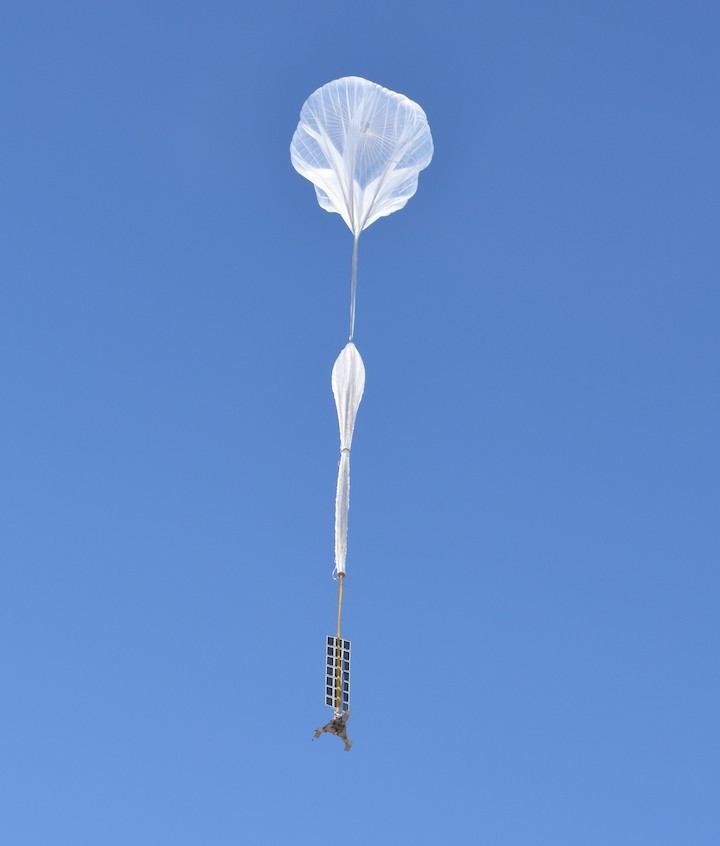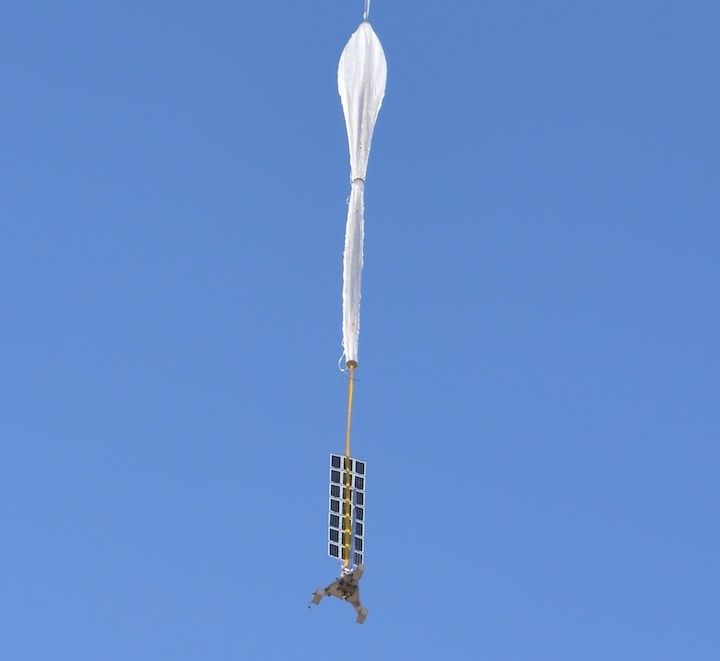6.11.2017

Long-duration stratospheric research missions could allow scientists to collect vast amounts of data continuously for their payloads. Such missions could benefit NASA by maturing future space technology as well as allowing for Earth observations, such as storm monitoring and forest fire tracking.
Previously, technological challenges have limited the duration of balloon flights in the stratosphere due to the lack of trajectory control necessary for longer flights. Now, a system developed by World View Enterprises promises the capability to perform large altitude changes to achieve meaningful trajectory control of balloon flights in the stratosphere.
World View’s novel altitude control technology was selected to receive funding through NASA’s Research Announcement: Space Technology – Research, Development, Demonstration, and Infusion (REDDI) 2016 solicitation. This summer, the company performed flight tests that demonstrated this system’s capability, which put World View one step closer to shifting the status quo of lack of altitude control.
“This really is an enabling technology and platform for testing science payloads,” said World View’s Iain Beveridge, principal investigator. “Now a lot of payloads may be interested in altitude control so they can put their payloads in the stratosphere and gather data continuously. We call it persistent coverage over an area.”
World View has been persistent in its development of the altitude control technology, just one component in a complex network of advances making up the company’s Stratollite system.
“The Stratollite basically acts as a satellite for the stratosphere, but actually gives you more coverage,” Beveridge explained. “During large portions of the year, we’re able to sustain coverage within about 100 miles of a target to keep our instruments looking at that specific point.”
During the company’s summer 2017 demonstrations on the Stratollite, all proposed success criteria were met. These criteria included demonstrating altitude changes, maintaining altitude levels during periods of both high and low solar elevation, and showing that the system is able to perform station keeping over a 24-hour flight.
“Our last Stratollite mission was a massive win for World View and completed another successful milestone in the development of the Stratollite,” said Beveridge. “As far as I know, this is the first high-altitude balloon vehicle to perform a controlled altitude change of this magnitude within the stratosphere.”
The 27-hour flight out of Page, Arizona, continued into California before maneuvering into westerly winds to guide the vehicle back toward Arizona. In addition to achieving its primary objectives, the vehicle also performed a large altitude excursion of 25,000 feet, limited only by the commercial airspace ceiling. The flight test raised the technology readiness level (TRL) of the Stratollite system to 9.
With development dating back to 2012, the Stratollite’s altitude control system is the result of extensive research into state-of-the-art methods to traverse the stratosphere while catching the varying directions of the winds needed by flights throughout the year.
“One of the biggest advantages we now have over other systems is that we have a vast altitude range for station keeping,” Beveridge said. “It is more difficult the higher you go because of the density of the air, but based on our testing it does look like our system will go 90K feet or above, and then still be able to perform down to the 50,000-60,000-foot range.”
By making meaningful shifts between altitudes as needed within a given trajectory, World View’s system may be able to support much longer balloon missions than previously possible.
“The end goal is to be able to fly these for six, nine, even 12 months at a time,” Beveridge said. “So researchers can gather 6 months of data and have a very high level of confidence that their system is going to work.”
The implications for scientific payload testing are significant. “The operational cost of these flights is less than 1% of the cost of sending those payloads to space,” explained Beveridge.
Paul De León, campaign manager for NASA’s Flight Opportunities program, agrees that this technology has the potential to enable missions to be more efficient. “Rather than flying multiple flights, researchers may be able to achieve their goals with a single long-duration flight. This capability will also enable experiments requiring long-term exposure, which are currently very difficult to achieve.”
In addition to saving time, cost, and complexity for science missions, the value beyond payload testing is also clear. “Instead of sending an aircraft over a hurricane, you can use trajectory control on a Stratollite to hover above the hurricane and monitor it constantly as it evolves,” said Beveridge. “You can also use it for forest fire tracking, disaster relief efforts, maritime surveillance, or possibly homeland security missions.”
World View is continuing development of this ground-breaking capability and has more flights scheduled later this year to test different mission scenarios, longer duration, and higher altitudes. Looking forward, World View’s flight manifest for 2018 includes an increasing number of payload providers interested in this platform capability.
Through the Flight Opportunities program, the Space Technology Mission Directorate (STMD) selects promising technologies from industry, academia and government and provides opportunities for testing and technology demonstration on commercial launch vehicles. The program is managed at NASA's Armstrong Flight Research Center in Edwards, California. STMD is responsible for developing the crosscutting, pioneering new technologies and capabilities needed by the agency to achieve its current and future missions.

Quelle: NASA
